The food and beverage industry is a segment of our economy that nearly all Americans interact with daily. This industry is comprised of “all companies involved in processing raw food materials, packaging, and distributing them, including fresh, prepared foods, as well as packaged foods, and alcoholic and non-alcoholic beverages,” per Global EDGE.
It is a unique sector in that, to truly maximize profits from their efforts, firms need to be operating in a way that maximizes the volume of throughput. Traditionally, these facilities are working on relatively thin profit margins – some even as low as 2% — so they are required to find fulfillment solutions that allow them to pack and ship their products as quickly as possible.
However, as labor unreliability grows and pick accuracy requirements increase, many of these companies are at a crossroads when it comes to optimizing their fulfillment operations. They are evaluating the question: “Is it time to introduce automation?”
Currently, they may be utilizing a less expensive storage system, choosing to instead rely on human labor for their fulfillment needs. However, they may be evaluating mini-load automated storage and retrieval systems (AS/RS) or pallet shuttle technology to help keep their costs-per-pick at a manageable level. However, automation can be expensive. Alternatively, some can look to goods-to-person fulfillment options that do not require infrastructure investment. The goal for these fulfillment centers is simple: maximize throughput and minimize labor costs to help increase their profit margins.
While the industry continues to evolve to keep up with ever-increasing expectations on faster fulfillment and order accuracy, some common storage types still emerge among the top food and beverage distribution centers across the United States.
Common Storage Solutions for the Food & Beverage Industry
Selective Rack
Selective pallet racking is by far the most common style of storage within food and beverage distribution facilities. Typically, in this industry, decisions are made quickly, and there is not much lead time on projects. Selective racking tends to be quicker to install than other racking styles, and it offers a more durable option, which is ideal in an industry that relies on forklifts to the degree that the food and beverage sector does.
While other integrators never change their specifications regarding their racking configuration, we have found a creative solution that offers some cost savings to our food and beverage partners. In storage racks that are several levels high, we often suggest that companies in the food and beverage industry use structural racking for the uprights and the bottom few beam levels – the ones used the most and most susceptible to forklift impact – and then switch to a roll-formed option for the remainder of the beam levels. Though roll-formed racking is less durable, it is also less expensive and thus can provide cost savings with little impact to functionality in this design.
Drive-In / Drive-Thru Racking
Drive-in and drive-thru racking are common in food and beverage storage environments because it adds a denser storage option than traditional selective pallet rack configurations. These racking systems allow companies to increase storage density by storing more pallets in a smaller area because they require fewer aisles from which to pick. Typically, that means up to 75% more space dedicated for pallets than a traditional selective rack. They are relatively less expensive on a per-pallet-position basis and are ideal for companies that rely on LIFO (last-in, first-out) inventory practices.
While this type of storage medium has been popular in this setting for years, we are noticing that fewer facilities utilize this style of racking as its primary storage means. As orders contain a smaller number of products-per-order, SKUs become smaller, and fulfillment times shrink because of quicker end-user expectations, facilities rely less on the drive-in and drive-thru racking as dense storage mediums.
Pushback Rack
Also designed primarily for LIFO inventory management, pushback rack is a dense storage system that allows materials to be stored within a lane, with pallets being pushed back as new inventory is added. Pallets are stored on a slight grade, so when a front pallet is picked, the design of the storage configuration allows rear pallets to gravity flow down the lane to be selected.
In food & beverage, when FIFO is managed using lot codes or date codes, pushback can be a solution to provide more density of storage while allowing for the maintenance of FIFO. Operating rules must be in place to support this approach, but it is often done successfully.
We have found that pushback rack systems are often designed for 2-deep or 3-deep storage for food and beverage storage and fulfillment centers. That makes the putting and retrieval faster and easier than in deeper 5-deep or 6-deep systems, which is critical in hastening the fulfillment process. Remember, companies within the food and beverage industry rely on throughput to maximize profits. So, as order profiles continue to get smaller with a wider variety of SKUs, this configuration supports optimizing the throughput of stored products.
Pallet Flow
Pallet flow racking offers additional storage density and labor savings when installed within a food and beverage distribution facility’s selective racking. Pallet flow consists of a back-to-back selective rack with lightly graded conveyor wheeled flow lanes installed on rails within the racking. This configuration allows back-loaded pallets to flow toward a pick face with the help of gravity to move the pallets from the loading side to the pick side.
Ideal for FIFO inventory management, this system ensures that picking aisles are always stocked, which means faster pick and load times for the facility. While other types of racking can hold between two and five pallets per racking configuration, pallet flow can facilitate between as many as twelve to fifteen pallets racks, depending on the system. Facilities can also customize the racks for optimal flow by designing the structure to the size and weights of their pallets, meaning pallet flow can be among the most efficient storage systems available for food and beverage distribution facilities.
It is also common in the food & beverage industry to see a combination of pallet flow on the ground level of the pallet rack with pushback on the upper levels. This approach allows for alternating pick aisles & replenishment aisles throughout the facility to maximize throughput from a picking perspective.
Mezzanines
Mezzanines are great additions to any warehouse or fulfillment setting because they are designed to create additional storage locations at both the floor and mezzanine levels. They can be designed to include multiple levels, adding additional pick locations with each pick level. Mezzanines are typically free-standing, rack-supported, or bin-supported, giving warehouses and fulfillment centers a durable solution to increase storage capacity without expanding their facilities’ footprint.
Platforms can be designed and installed at a fraction of the cost of expanding the facility, which is crucial to a business operating on already thin margins. They are custom-built to support the exact type of products stored within the facility and can genuinely increase fulfillment speeds when combined with a conveyor system that gives those who are not at ground level the ability to transfer their pick loads without traveling up and down stairs or an elevator.
Carton Flow
Carton flow systems have two significant benefits to food and beverage companies: improved picking speeds and increased storage capacities. Carton flow systems use gravity to push products through a pallet rack on roller tracks, meaning as an item is picked from the pick face, the entity behind it (usually the same SKU) is fed to the front, ready to be selected. These systems are often installed within standard pallet racks, with tracks installed on the beams with the assistance of hangers. They can be customized to fit multiple sizes, so different SKUs (and their respective packaging) can be accommodated, whether stored in cartons, bins, or boxes.
In the food and beverage industry, these systems are ideal for each picking, as it makes the picking process easier and quicker for pickers. Instead of searching a pallet for a particular product, carton flow can be installed on floor level with selective or pushback lanes above, giving better access to the quick-moving products while maximizing storage space & minimizing the amount of travel required to pick an order.
Pallet Shuttle Systems
In the food & beverage industry, it is common to have many pallets worth of inventory on hand in the distribution center for the fastest-moving items. It is also common to have a need for expensive temperature-controlled storage – typically cooler or freezer space. Pallet shuttle systems can be a great way to provide very dense storage while still accommodating fast fulfillment speeds. A pallet shuttle system utilizes a deep rack structure (often 25-30 pallets deep, or more) and semi-automated shuttles (or carts) to move pallets into the dense storage.
The shuttles can be easily moved from lane to lane or level to level within the storage system by forklift operators. The same shuttles are used to retrieve pallets and move them to the front position in the deep lane system to allow for efficient picking.
What Storage-Type Combination is Best for Your Food & Beverage Distribution Center?
As is typical with most distribution centers and fulfillment centers, the optimal storage configuration for your facility will be determined by your products, your order profiles, and your fulfillment strategy. If you are beginning to assess your facility layout, the best place is to evaluate your system and design your storage configuration around a dynamic fulfillment process. If you have a facility in place and are looking to optimize your capacity or improve your operations, you may need to establish your opportunities for improvement.
Either way, we’re here to help. Give us a call, and our team of storage and fulfillment experts can talk through your business goals and challenges, perhaps even touring the facilities to determine the optimal course of action. Our team has decades of combined experience in determining storage solutions that can relieve the challenges caused by labor shortages, suboptimal storage, and poor facility design.
Let’s get the conversation started today!

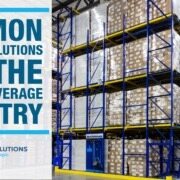
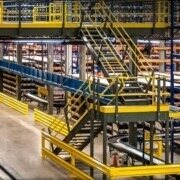
 School/Area of Study: Simpson College/Indianola, IA – Marketing Major/Communication Studies Minor
School/Area of Study: Simpson College/Indianola, IA – Marketing Major/Communication Studies Minor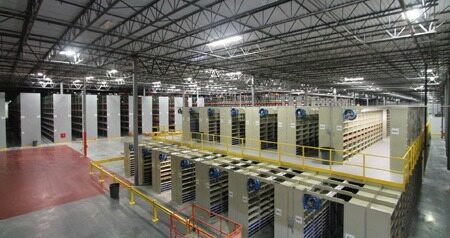

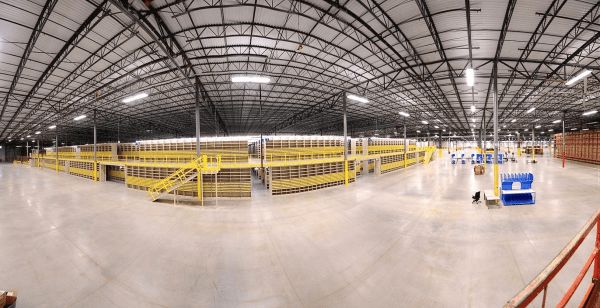

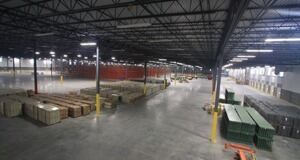

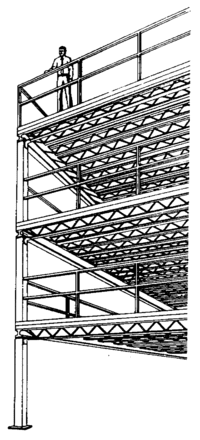 A mezzanine is a structure that stands alone and is constructed within an existing building. This structure is designed to maximize space under and above it which creates additional space for storage or offices. These are extremely durable structures; they are designed to sustain heavy loads. It is usually engineered for specific needs. These are great for creating other levels using your existing space; if you need more space allow mezzanines to build up instead of out.
A mezzanine is a structure that stands alone and is constructed within an existing building. This structure is designed to maximize space under and above it which creates additional space for storage or offices. These are extremely durable structures; they are designed to sustain heavy loads. It is usually engineered for specific needs. These are great for creating other levels using your existing space; if you need more space allow mezzanines to build up instead of out.